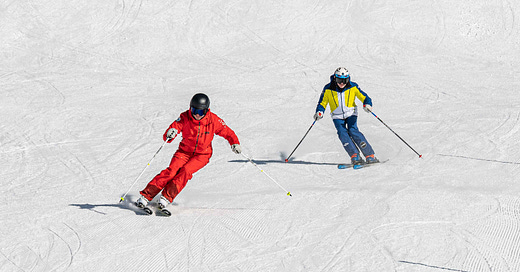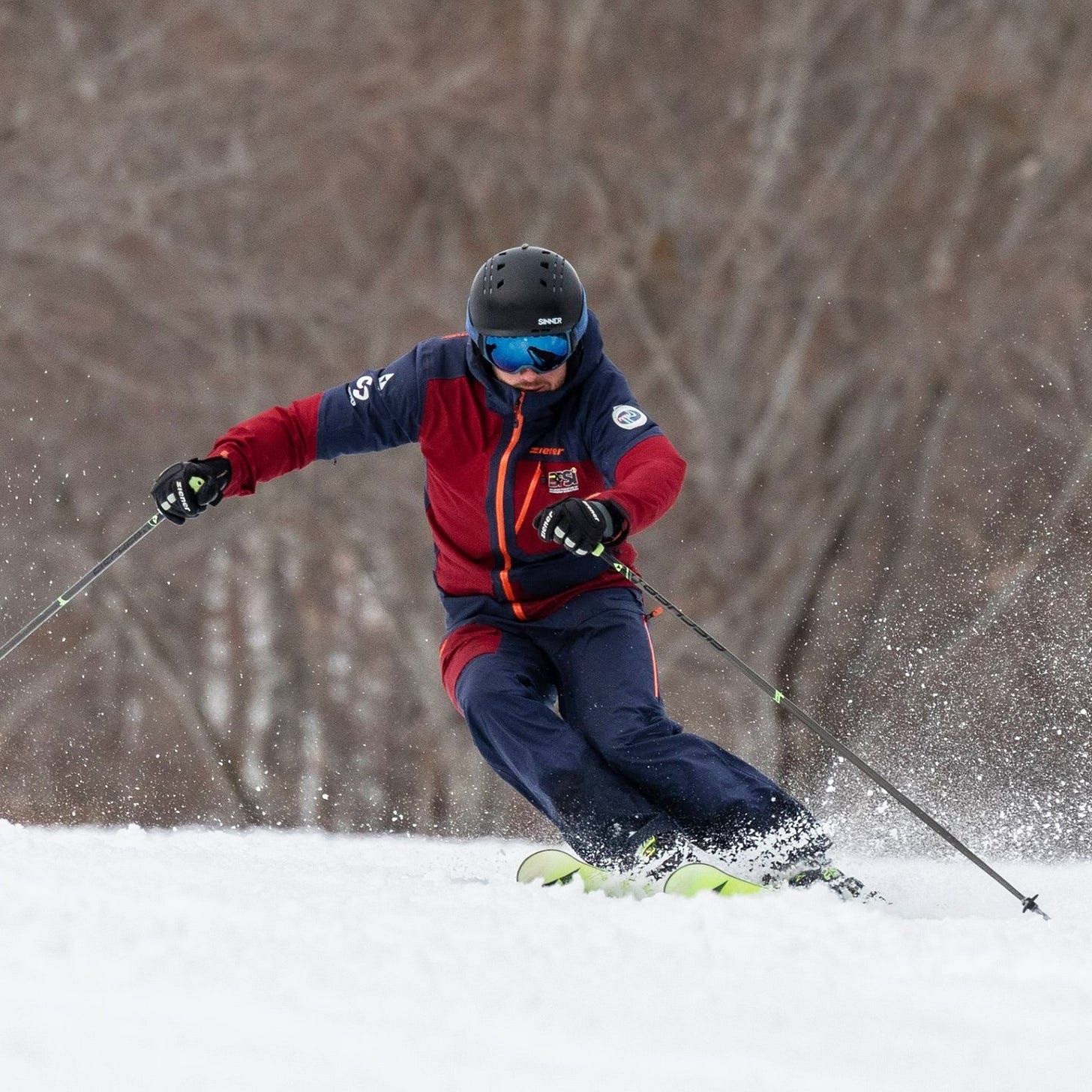Some practical thoughts on making your short turns look AWESOME...
Unveiling the secrets of every ski instructor's favourite show-off technique...
How can you make your short turns more interesting?
There are different types of short turns, but generally these are the three main things to consider for a top-level dynamic silhouette:
If the terrain allows it, the short turns are purely carved. The skis are locked onto the edges for the entire distance through the turn, creating a narrow, clean groove in the snow without slipping… Carved short turns are exciting. They are a way to ski fast without losing control on groomed terrain. Furthermore, they are great preparation for skiing a slalom course.
The skis follow a circular trajectory. The tracks left behind in the snow have a circular shape (similar to the Nike logo).
They are skied at a higher speed, making lateral movements more possible, making progressive edging more crucial, and requiring us to master pressure reactions more efficiently.
The latter factor can add some extra spice to your short turns. In a dynamic short turn, the skier is going to ski at a higher speed, allowing the body's centre of mass to move further inwards, increasing the edge angle, allowing the skis to flex more and, therefore, allowing these to also trigger a greater pressure response.
Higher speed allows your body's centre of gravity to move further in, creating a more athletic look for your short turns.
How do your skis interact with the snow during these dynamic short turns?
For this, we need to zoom in on the movement sequence:
The skis are actively edged in at turn entry by a dynamic rolling movement from the lower body, with ankles, knees, and hips working together as 1 large organ.
The maximum edge angle is achieved in the middle of the control phase (apex of the turn).
The skis flex and the ski design is actively used for rebound.
The rebound is exploited to allow the skis to pass under the body via a compact edge change.
The tails of both skis always follow the same path as the tips in this process.
Look for a high edge angle and benefit from rebound.
Which role does the torso play in creating larger angles for my short turns?
An important part of executing dynamic short turns is being able to move your legs independently of your upper body. We call this separation.
Body separation allows you to balance better against your outside ski, which further improves speed control. This is especially critical when skiing energetic dynamic short turns, where you need to be able to make quick balance adjustments.
Counterbalancing and counteracting, for example, would not be possible without separation.
Counterbalancing is an additional movement of the upper body that ensures the upper body moves correctly with the lower body. Here, the upper body moves sideways to balance over the correct ski at the start of the turn.
When the skis roll to the left, the upper body rolls in the opposite direction to counterbalance. This is linked to weight transfer and takes place in the transition at each turn.
Counteracting is the movement that, through a specific action of the upper body, creates the opposite movement of the hips, relative to the turning of the skis. It is a technique used, for example, by slalom skiers to quickly anticipate the next slalom gate, which allows them to carve it more aggressively.
But how do you improve your separation when skiing?
Basically, any exercises where you learn to move your upper body independently of your lower body are a good option.
Here are two of my favourites:
Javelin hockey stops: dynamic stoppage on the slope by turning the skis crosswise + crossing inner ski over outer ski (just like a javelin turn). This is a good drill for counteracting in short turns.
(Dynamic) short turns with dragging the outside pole: draw a track next to your outside ski in the snow with your outside pole. This is a drill where you can work on your counterbalancing and natural angulation.
In summary, some separation while skiing allows you to create much larger angles in your body parts, allowing you to balance on your edges far better. And it also opens the door to further manipulating your skis to create much bigger angles on the snow if needed.
Let’s keep training!







